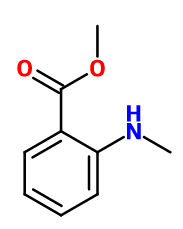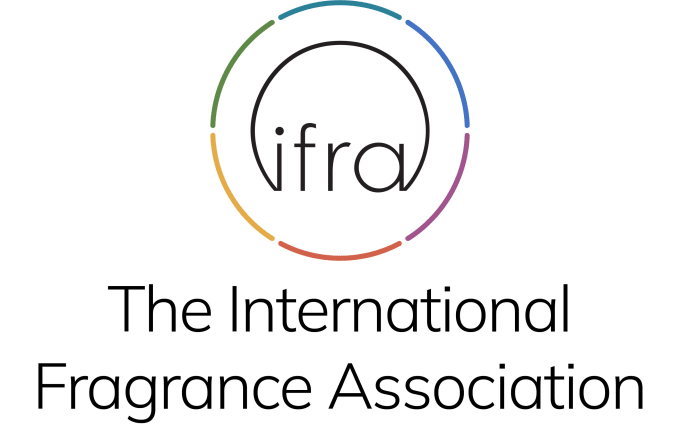
Crédits photo: ScenTree SAS
Diméthyl anthranilate
Anthranilate de diméthyl ; Méthyl Anthranilate de méthyle ; Methyl 2-methylaminobenzoate ; 2-Méthylaminobenzoate de méthyle ; Benzoate de methyl 2-(methyl amino) ; Benzoate de methyl 2-(methylamino) ; 2-amino-3-methylbenzoate de methyl ; 2-amino-3-methylbenzenecarboxylate de methyl ; 2-amino-3-methyl benzenemethanoate de methyl ; 3-methylanthranilat de methyl ; Methyl anthranilate de methyl ; Methanthranilat de methyl ; Methyl anthranilate methyl ; N-methyl anthranilate de methyl ; N-methyl-2-aminobenzoate de methyl ; 2-methylaminobenzoate de methyl

Crédits photo: ScenTree SAS
| Entreprise | Nom de l'ingrédient | ID | Commentaires | Naturalité | Certifications | Pureté | Nom latin | Partie traitée | Origine géographique | MOQ |
|---|---|---|---|---|---|---|---|---|---|---|
|
|
Anthranilate de dimethyle - 30Gr | - |
Visit website
|
- | - | - | - | - | - | |
|
|
METHYL METHYL ANTHRANILATE | M_0050657 |
Visit website
|
Naturel | - | - | - | - | - |
Général
-
N° CAS : 85-91-6
-
N° EINECS : 201-642-6
-
N° FEMA : 2718
-
N° FLAVIS : 09.781
-
N° JECFA : 480
-
Aspect : Liquide orangé
-
Densité : 1,138
-
Tenue : Coeur
-
Gamme de prix : €€
Propriétés physico-chimiques
-
Formule brute : C9H11NO2
-
Masse molaire : 165,19 g/mol
-
Log P : 2,69
-
Point de fusion : 18°C
-
Point d'ébullition : 256°C
-
Seuil de détection : Donnée indisponible.
-
Optical rotation : Donnée indisponible
-
Pression vapeur : Donnée indisponible
-
Indice de réfraction @20°C : Donnée indisponible
-
Valeur d'acide : Donnée indisponible.
-
Point éclair : 91°C
Utilisations
Utilisations :
Le Diméthyl anthranilate est utilisé dans des notes florales et fruitées. Très utile dans les accords de mandarine. Peut être associé aux boisés chauds, mais moins avec les boisés plus frais.
Découverte :
Donnée indisponible.
Présence dans la nature :
Le Diméthyl anthranilate est l'un des constituants majoritaires de l'huile essentielle de petitgrain mandarinier et est présente aussi dans la Mandarine Jaune HE. Elle peut être extraite de ces huiles à l'état naturel.
Isoméries :
Le Diméthyl anthranilate ne possède aucun isomère utilisé en parfumerie.
Précurseurs de synthèse :
Le Diméthyl anthranilate produit facilement des bases de Schiff par réaction avec les aldéhydes.
Voies de synthèse :
Le Diméthyl anthranilate est préparé à partir d'Anthranilate de méthyle, par une réaction de méthylation de la fonction amine de la molécule. Cette réaction est faite en milieu acide.
Réglementation & IFRA
Allergènes :
Cet ingrédient ne contient pas d'allergènes.
51ème amendement :
Cet ingrédient est réglementé par le 51ème amendement
- Dosage limite recommandé :
-
Cat.1 Cat.2 Cat.3 Cat.4 Cat.5A B C DCat.6 0,10 % 0,10 % 0,10 % 0,10 % 0,10 % 0,10 % 0,10 % 0,10 %0,50 % Cat.5A B C DCat.6 0,10 % 0,10 % 0,10 % 0,10 %0,50 % Cat.7A BCat.8 Cat.9 Cat.10A BCat.11A BCat.12 0,50 % 0,10 %0,10 % 0,50 % 0,50 % 0,10 %No restriction 0,10 %No restriction Cat.10A BCat.11A BCat.12 0,50 % 0,10 %No restriction 0,10 %No restriction
Annexe I :
Certains ingrédients naturels contiennent des composants eux-mêmes réglementés qu'il convient de prendre en compte dans les doses limites recommandées. Dans le cas où vous n'avez pas la possibilité d'avoir des chromatographies précises pour vos qualités d'ingrédients naturels, l'IFRA fournit des tables avec des concentrations à prendre par défaut. Les voici :
| Liste des composés réglementés contenus dans cet ingrédient | |||
|---|---|---|---|
| Nom de l'ingrédient | Nom botanique | N° CAS | Concentration estimée |
| Mandarin oil | Citrus reticulata Blanco | 8008-31-9 | 0,4 |
| Petitgrain mandarin oil | Citrus reticulata Blanco | 8014-17-3 | 50,13 |
| Petitgrain oil, Paraguay | Citrus aurantium L. spp. Amara Link | 8014-17-3 | 0,06 |
| Clementine oil | Citrus clementina Hort. Ex Tan | 93686-22-7 | 0,03 |
| Genet absolute | Spartium junceum L. | 90131-21-8 | 0,34 |
-
Restricted ingredients due to phototoxicity considerations: notes
This Standard is set due to the phototoxic effects of Methyl N-methylanthranilate. For more detailed information on the application of this Standard, please refer to the note on phototoxic ingredients in chapter 1 of the Guidance for the use of IFRA Standards.
Specified ingredients: notes
This material has been identified for having the potential of forming nitrosamines in nitrosating systems. Downstream users therefore have to be notified of the presence of the material and its potential, to be able to consider adequate protective measures.


